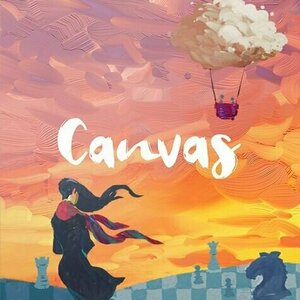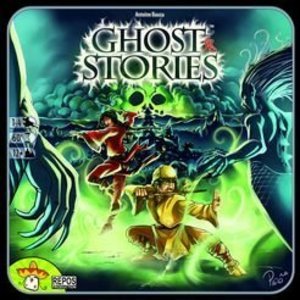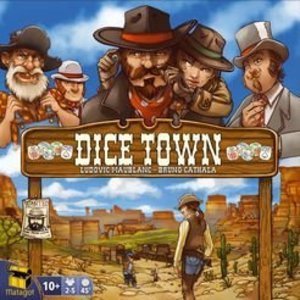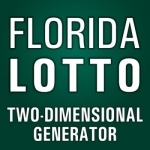
Lotto Winner for Florida Lottery
Business and Entertainment
App
This app helps players to choose numbers with an algorithm, UNIQUE IN THE WORLD for Florida Lottery...
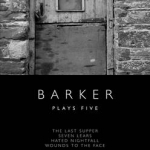
Howard Barker Plays Five: Hated Nightfall , Seven Lears , Wounds to the Face , The Last Supper
Book
Includes the plays The Last Supper, Seven Lears, Hated Nightfall and Wounds to the Face.
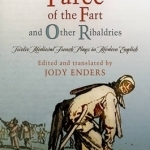
The Farce of the Fart and Other Ribaldries: Twelve Medieval French Plays in Modern English
Book
Was there more to medieval and Renaissance comedy than Chaucer and Shakespeare? Bien sur. For a real...
Gareth von Kallenbach (980 KP) rated the PC version of Wolfenstein: Youngblood in Video Games
Aug 8, 2019
Wolfenstein Youngblood and it is a departure from the prior games in the
series. The series originated on early computers with Castle Wolfenstein
and Beyond Castle Wolfenstein before emerging years later as an early
First Person Shooter Game. The success of the series has endured with this
now being the fourth release in the series since Bethesda took control of
the series.
Unlike prior games in the series, BJ Blazkowicz is a minor character and
players will plat as either Soph or Jess; his teenage twins. Like the
prior games in the series, the Nazi’s are in control and in this alternate
version of the 1980s; the twins must work with one another to complete
various missions with the Resistance in order to save the day.
The game requires players to play in a Co-Op mode with either another
player or the A.I. controlling the other sister. This is tricky as if one
dies; the game ends and you also must repeat the entire level as there are
no checkpoints and saves.
I strongly suggest playing with another player as thanks to the Buddy Pass
option; you can play with a friend who has the Trial Version of the game
or be randomly matched with another player. The trick with being matched
with another player is that you do not have control over which missions
you will play and I have played far more of the “Brother 2” level than I
wanted to.
The A.I. also has issues with doing things like going full bore into a
large mass of enemies with low health when you are in need of aid. The
smart move would be to withdraw, help heal your sister, and regroup, but
this does not happen. It can be very frustrating to be deep in a level and
lose it due to issues like this.
There were also some annoying crashes like when I was in the final battle
with the Uber Boss and had to repeat several levels to return to where I
was.
Thankfully the game looks great and the action is as intense and brutal as
any in the series. There are numerous weapons which can be upgraded via
Silver coins that players collect and they will be needed as the enemies
are abundant and the Mechanized units can really end your game fast.
There are also special weapons players can obtain as well as gun
emplacements which really help turn the tide of the battle.
In between missions’ players can hang out in headquarters and explore as
well as take on additional side missions and interact with various N.P.C.
characters.
While some may take exception to the new style of play, the characters,
and other issues; the game is attractively prices at $29.99 and seeing how
Bethesda has been providing updates on a regular basis; this is a
Wolfenstein game that fans who exercise a bit of patience and adaptation
can warm up to as I did.
3 stars out of 5.
http://sknr.net/2019/08/08/wolfenstein-youngblood/
Purple Phoenix Games (2266 KP) rated Canvas in Tabletop Games
Feb 3, 2021
Canvas is a game of card drafting and set collection in which players are trying to layer their cards to create unique pieces of artwork that will earn them Ribbons (VP) at the local art festival. To begin, set up the canvas mat, 4 random Scoring Cards, Ribbon tokens, and Art cards in their corresponding locations in the play area. Each player receives 3 sleeved Background cards and 4 Inspiration tokens. Select a starting player, and the game is ready to begin!
Playing over a series of rounds, players will take turns either Taking an Art Card or Completing a Painting. If you choose to Take an Art Card, you select an Art Card from the canvas mat and take it into your hand. The card furthest from the draw deck is free, but subsequent cards must be ‘purchased’ by spending Inspiration. Place 1 Inspiration token on every card preceding the one you take into hand. If you select an Art Card that has an Inspiration token on it, you collect that token for future use!
If you have at least 3 Art Cards, or a maximum of 5 Art Cards in hand, you must Complete a Painting. You will select 3 of your Art Cards to be sleeved with one of your starting Background cards. You may layer the Art Cards in any order you choose – but remember, only visible icons are used for scoring! Once you have Completed a Painting, you immediately score that piece. Compare the visible icons on your final painting to the Scoring Cards, taking any corresponding Ribbon tokens for successfully meeting their requirements. Play continues in this manner until all players have completed their 3 paintings. Players count up their cumulative scores from all paintings, and the player with the most points is the winner!
The gameplay seems simple enough, right? Yes! It is very straightforward since you only have 2 options for each turn. Either draft a card, or complete a painting. Teaching time is minimal and the gameplay can move quickly. But THAT is where the simplicity ends, my friends. The heart of Canvas is in its strategy. Each game has 4 random Scoring Cards, which define how you will earn points. And each transparent Art Card has a number of icons at the bottom that will affect how you resolve each Scoring Card. By layering your Art Cards, you will cover some icons, while letting others remain visible. The possibilities are truly endless when it comes to how to layer your cards, but are you clever enough to layer them for maximum points? Admittedly, the various layering possibilities coupled with 4 different Scoring Cards can lead to some analysis paralysis, as players try to figure out every combination they have to see what could earn the most points. But all in all, I have found the that the gameplay is never really at a standstill, because as one player is taking their turn, all others can be strategizing with their own cards.
Let’s talk about components. First off, I love the canvas mat – it really brings the theme to life and is good quality! The Art Cards are colorful and sturdy, and they really are clear enough to see even when layered upon each other. (I should say that I did remove the plastic film from the manufacturing process.) The Scoring and Background cards are nice, big, and easy to read and understand. My deluxe copy of Canvas has Wooden Ribbons and Inspiration tokens instead of the standard cardboard, and they are nice, chunky, and fun to play with. There are even 5 small wooden easels on which players can display their masterpieces! All in all, the deluxe components are great quality and really elevate the gameplay. AND the game box literally has a hole in the back so it can be hung on the wall, like a real piece of art! Such a creative and immersive approach to the game, that just puts a smile on my face.
If you’ve read this far in my review, I think you can tell that I really love Canvas. The theme is creative, the gameplay is simple, but extremely strategic, and the high quality components really make it feel deluxe. Is there anything I don’t like about it? Maybe that it makes my brain hurt sometimes when trying to figure out the best layering combo of my Art Cards. But seriously, this game is a new and unique twist on some of my favorite mechanics. Canvas is quickly making its way towards my Top 10 list, and this is one I will definitely be pulling out at game nights pretty often. Purple Phoenix Games gives this one an eccentric 11 / 12. Give it a shot, I don’t think you’ll be disappointed.
Matthew Krueger (10051 KP) rated Ghost Stories in Tabletop Games
Jul 28, 2020 (Updated Jul 30, 2020)
Gameplay:
Each Player represents a Taoist monk working together with the others to fight off waves of ghosts.
The players, using teamwork, will have to exorcise the ghosts that appear during the course of the game. At the beginning of his turn, a player brings a ghost into play and places it on a free spot, and more than one can come in at the same time. The ghosts all have abilities of their own – some affecting the Taoists and their powers, some causing the active player to roll the curse die for a random effect, and others haunting the villager tiles and blocking that tile's special action. On his turn, a Taoist can move on a tile in order to exorcise adjacent ghosts or to benefit from the villager living on the tile, providing it is not haunted. Each tile of the village allows the players to benefit from a different bonus. With the cemetery, for example, Taoists can bring a dead Taoist back to life, while the herbalist allows to recover spent Tao tokens, etc. It will also be possible to get traps or move ghosts or unhaunt other village tiles.
To exorcise a ghost, the Taoist rolls three Tao dice with different colors: red, blue, green, yellow, black, and white. If the result of the roll matches the color(s) of the ghost or incarnation of Wu-Feng, the exorcism succeeds. The white result is a wild color that can be used as any color. For example, to exorcise a green ghost with 3 resistance, you need to roll three green, three white, or a combination of both. If your die rolls fall short, you can also use Tao tokens that match the color in addition to your roll. You may choose to use these after your roll. Taoists gain these tokens by using certain village tiles or by exorcising certain ghosts. One of the Taoists has a power that allows him to receive such a token once per turn.
To win, the players must defeat the incarnation of Wu-Feng, a boss who arrives at the end of the game. There are also harder difficulty levels that add more incarnations of Wu-Feng, in which to win, you must defeat all of them.
There are many more ways to lose, however. The players lose if three of the village's tiles are haunted, if the draw pile is emptied while the incarnation of Wu-Feng is still in play, or if all the priests are dead.
It is hard game but the strategy to this game is excellent cause you have to think about your moves and what to do next. That and the clock is ticking down to one of the ten Wu-Feng Minions. Also if 3 village spaces get crushed than you lose. Also the luck of the dice and the cards. The strategy is ten fold. Its hard but a excellent game and a must play game. Buy it if you havent already cause its a must. If you want to learn more or see a runthrough of the game go to BoardGameGeek, Rahdo Runthroughs or Dice Tower Reviews.

EA SPORTS™ FIFA 18 Companion
Games
App
Read on for important info below! This app requires you to have an EA Account, FIFA 18 (available...
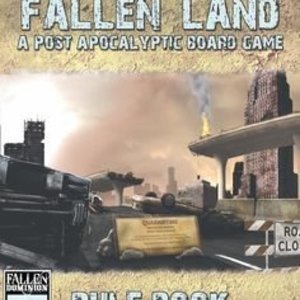
Fallen Land: A Post Apocalyptic Board Game
Tabletop Game
Set in a post-apocalyptic sci-fi setting, Fallen Land: A Post Apocalyptic Board Game is a hybrid...
Purple Phoenix Games (2266 KP) rated Dice Town in Tabletop Games
Aug 13, 2019 (Updated Jun 24, 2021)
Dice Town is a rootin’-tootin’ dice chuckin’ game relying heavily on poker and card majority. Each player is trying to gain the most money, gold nuggets, and property cards to beef up their VP totals once the game ends to become the baddest dude in the West.
To setup, place the town board in the middle of the table and populate its different areas with their components: the Gold Mine receives all the gold nuggets, the Bank receives $3 initially, the General Store receives all the cards of its deck with three property cards will be displayed next to Town Hall, and Doc Badluck will receive its deck with two cards displayed. Each player will receive a dice cup, five dice, and $8 to start. The youngest player received the Sheriff badge card and the game may begin!
Turns are taken simultaneously among all players. Players will roll their dice using the dice cup and choose one result to keep. They may keep more dice by paying $1 for each die kept, or they may pay $1 to keep zero dice and try again. Players are attempting to roll the best poker hand during these turns to set themselves up for the next phase of the game – actions.
Once all players are finished keeping dice and building poker hands, they move to the actions phase. Beginning with the Gold Mine and moving left to right, each area of town will be resolved based on the players’ results. The player with the most 9s rolled will take nuggets from the Gold Mine equal to the number of 9s rolled. The player with the most 10s will take the money at the bank. Most Jacks will draw General Store cards (that can mess with other players or help the holder) equal to the number of Jacks rolled and choose one card to keep. The most Queens will summon a lady at the Saloon to help steal any General Store or property card from another player. Most Kings will be the new Sheriff in town and will break all ties (and also can be bribed). Whomever was able to build the best poker hand will be able to claim the property card at the bottom of the display and one additional property for each Ace rolled. Finally, if a player was not able to win anything up to this point, they will be able to claim a card from Doc Badluck which can be very powerful.
Play continues in this fashion until either the supply of gold nuggets has run dry or all of the property cards have been doled out. Players will score VPs for nuggets, certain General Store cards, one VP per $2 cash, $5 from being Sheriff at the game end, and VP printed on property cards owned. Once the winner is determined, that player must now challenge the losing players to a duel at high noon. Or just gloat a lot.
Components. As you can see in the photos, the component quality is excellent, as with most Matagot titles. The dice cups are sturdy plastic, the embossed poker dice are awesome, the gold nuggets are great as well! I like the quirky cartoony art style. What I do not like about Dice Town components are the cards. They are super glossy, and that’s heck for taking photos and I just don’t enjoy the feel of them as much as the nice linen-finishes. It doesn’t break the game for me or make me enjoy playing it less, I just prefer other types of finishes on cards.
I really like Dice Town. I have always had a great time when playing, and I have even acquired it twice now. I sold my first edition copy via a BGG auction (I was addicted to auctions several years back) and missed it, so I was able to grab a second edition copy last year. I haven’t regretted reacquiring it and though I rated it a 4 I don’t see this ever leaving my collection again. I love the American West theme, and I love the way the dice cups feel and sound as players are slamming them on the table. But also I hate the way the dice cups sound as players are slamming them on the table when my children are trying to sleep or without some type of buffer material between the cups and a hard table top.
The second edition printing is definitely the way to go when deciding whether to purchase Dice Town. Everything is upgraded, and the rules have been tweaked a bit for the better. I don’t really know why I like American West in my board games so much because I can’t stand Western style movies or books, but I can’t get enough of them in my games. If you and I share preferences on games and themes and components, try to grab a copy of Dice Town. You will certain like it quite a bit. We do. Purple Phoenix Games give this one a 12 / 18. While that doesn’t seem like a great score, we would rather have access to it than not. And with so many games out there, earning a place on my shelf is a big deal for a game. So enjoy!


